MBA623 Healthcare Management: Nuffield Health Tech Adoption Report
VerifiedAdded on 2023/03/17
|18
|1865
|62
Report
AI Summary
This report provides an in-depth analysis of Nuffield Health, a leader in healthcare technology adoption. It examines the organization's structure, healthcare activities, and stakeholder groups, highlighting the implementation of the Mako robotic arm system and its impact. The report explores stakeholder perspectives, challenges, and opportunities associated with this technology, including ethical responsibilities and potential future technologies such as predictive analytics, e-vital signs systems, remote community monitoring, and e-ICUs. The analysis covers the benefits, limitations, and ethical considerations of technology integration, offering insights into how Nuffield Health can further improve efficiency, reduce errors, and enhance patient care through strategic technology advancements.
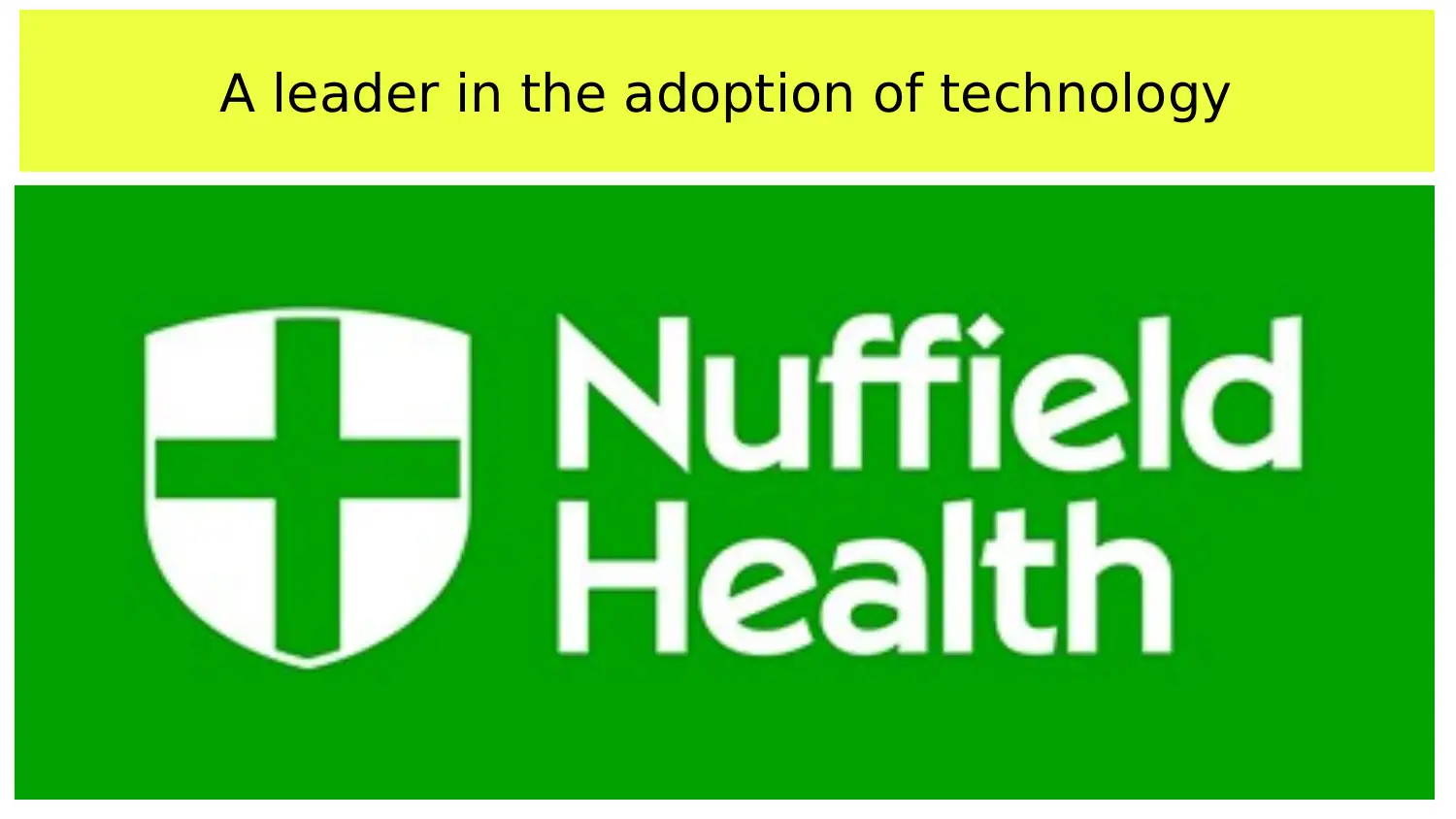
A leader in the adoption of technology
Paraphrase This Document
Need a fresh take? Get an instant paraphrase of this document with our AI Paraphraser
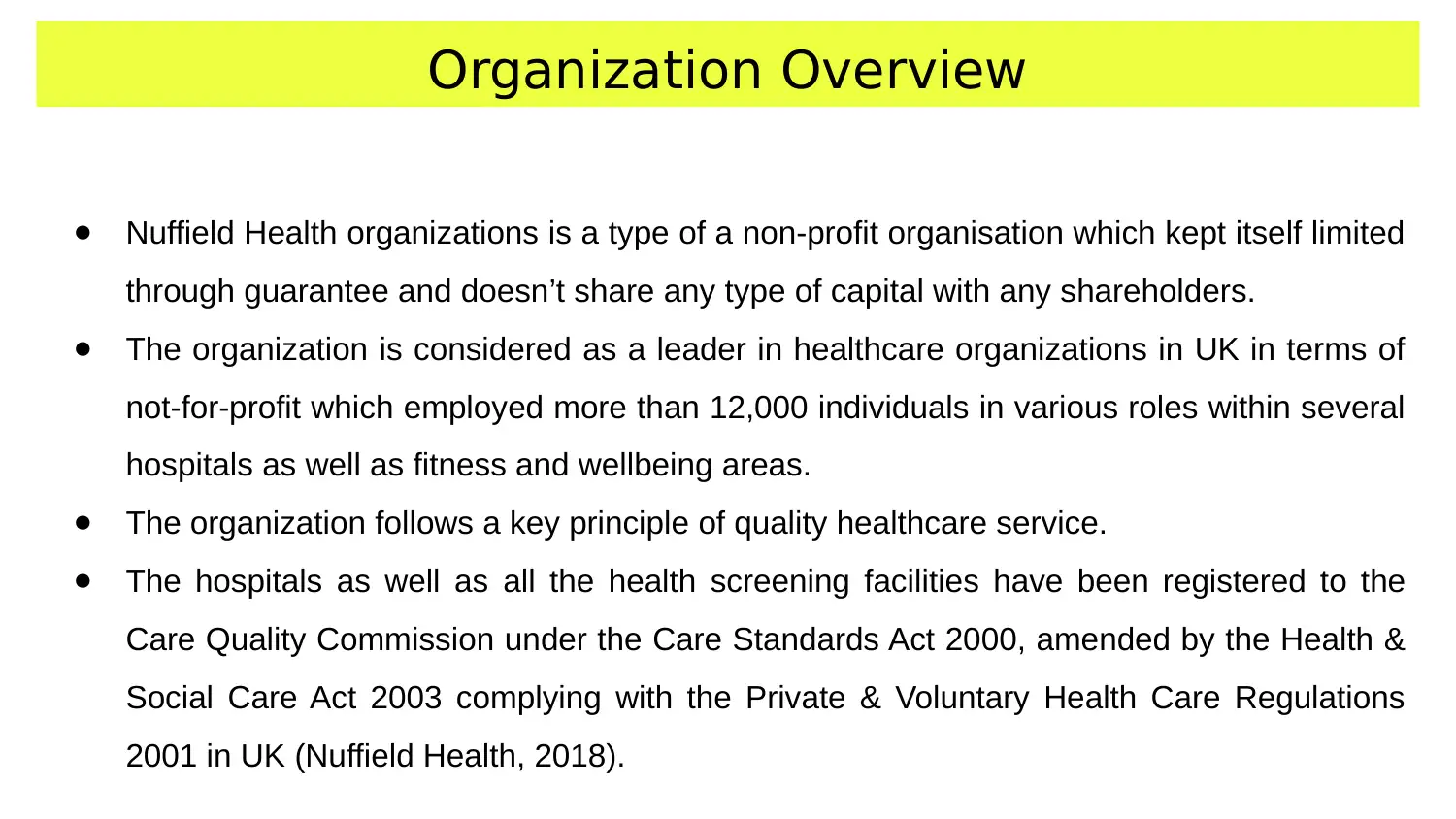
Organization Overview
● Nuffield Health organizations is a type of a non-profit organisation which kept itself limited
through guarantee and doesn’t share any type of capital with any shareholders.
● The organization is considered as a leader in healthcare organizations in UK in terms of
not-for-profit which employed more than 12,000 individuals in various roles within several
hospitals as well as fitness and wellbeing areas.
● The organization follows a key principle of quality healthcare service.
● The hospitals as well as all the health screening facilities have been registered to the
Care Quality Commission under the Care Standards Act 2000, amended by the Health &
Social Care Act 2003 complying with the Private & Voluntary Health Care Regulations
2001 in UK (Nuffield Health, 2018).
● Nuffield Health organizations is a type of a non-profit organisation which kept itself limited
through guarantee and doesn’t share any type of capital with any shareholders.
● The organization is considered as a leader in healthcare organizations in UK in terms of
not-for-profit which employed more than 12,000 individuals in various roles within several
hospitals as well as fitness and wellbeing areas.
● The organization follows a key principle of quality healthcare service.
● The hospitals as well as all the health screening facilities have been registered to the
Care Quality Commission under the Care Standards Act 2000, amended by the Health &
Social Care Act 2003 complying with the Private & Voluntary Health Care Regulations
2001 in UK (Nuffield Health, 2018).
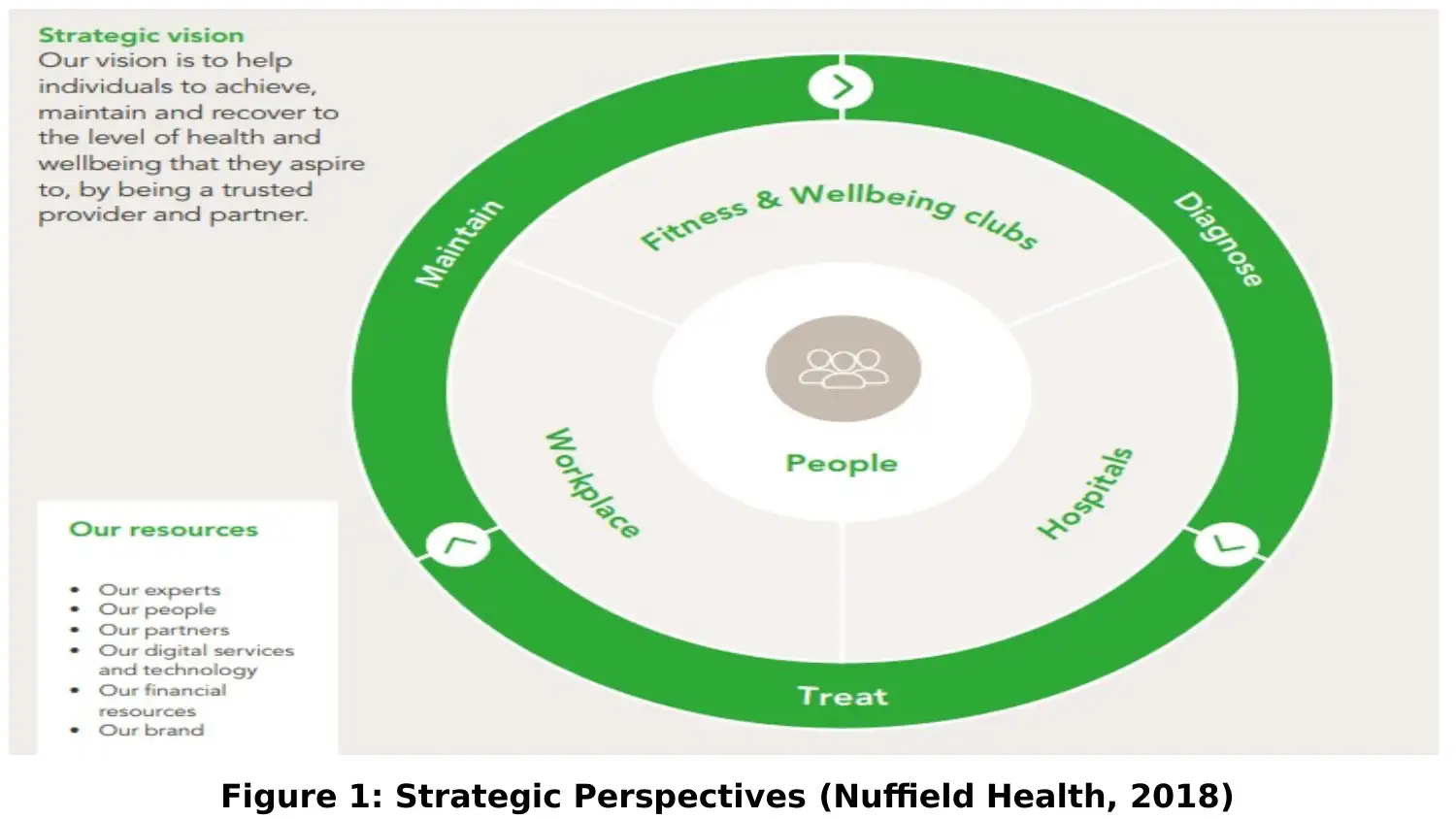
Figure 1: Strategic Perspectives (Nuffield Health, 2018)
⊘ This is a preview!⊘
Do you want full access?
Subscribe today to unlock all pages.

Trusted by 1+ million students worldwide
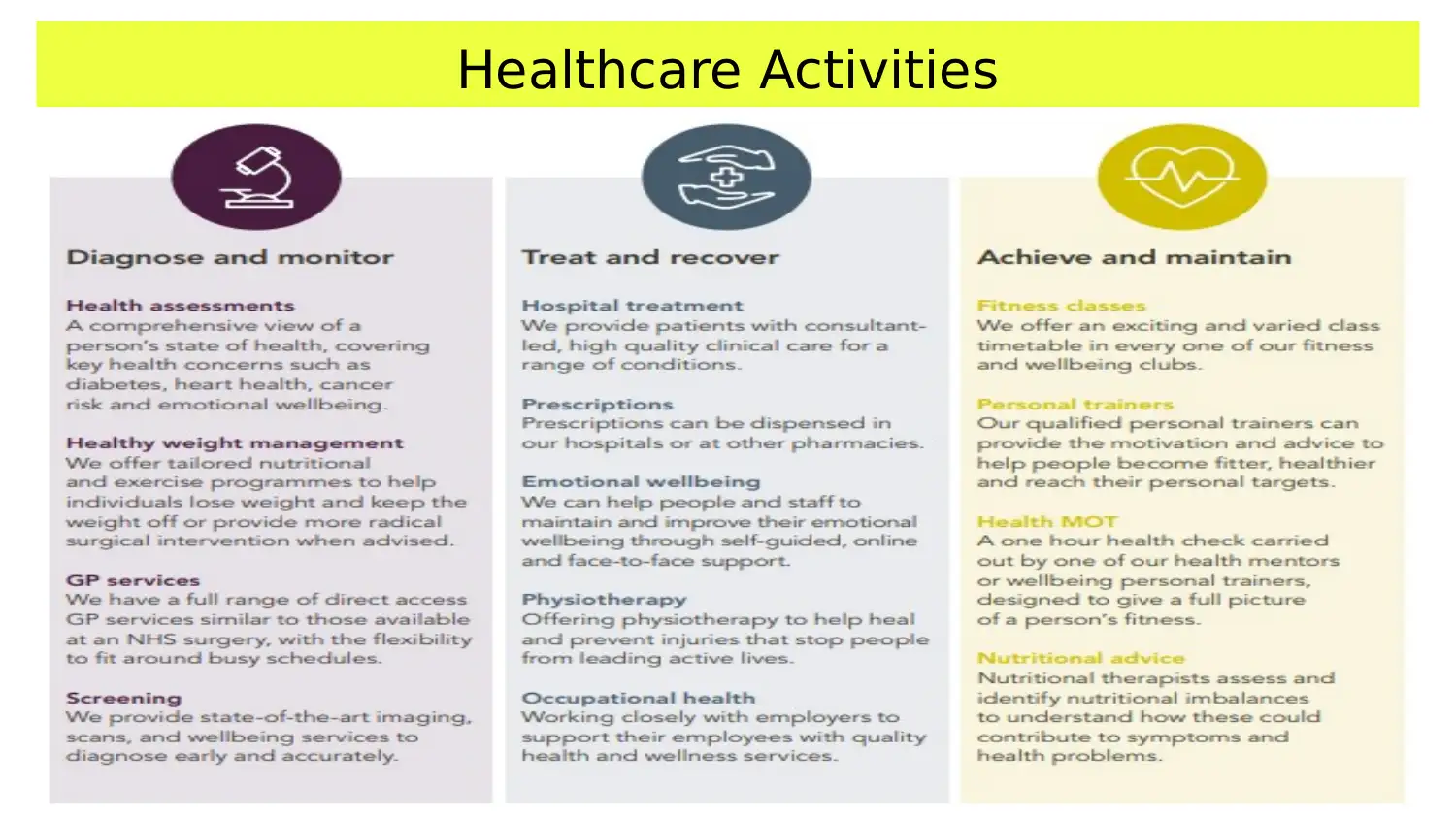
Healthcare Activities
Paraphrase This Document
Need a fresh take? Get an instant paraphrase of this document with our AI Paraphraser
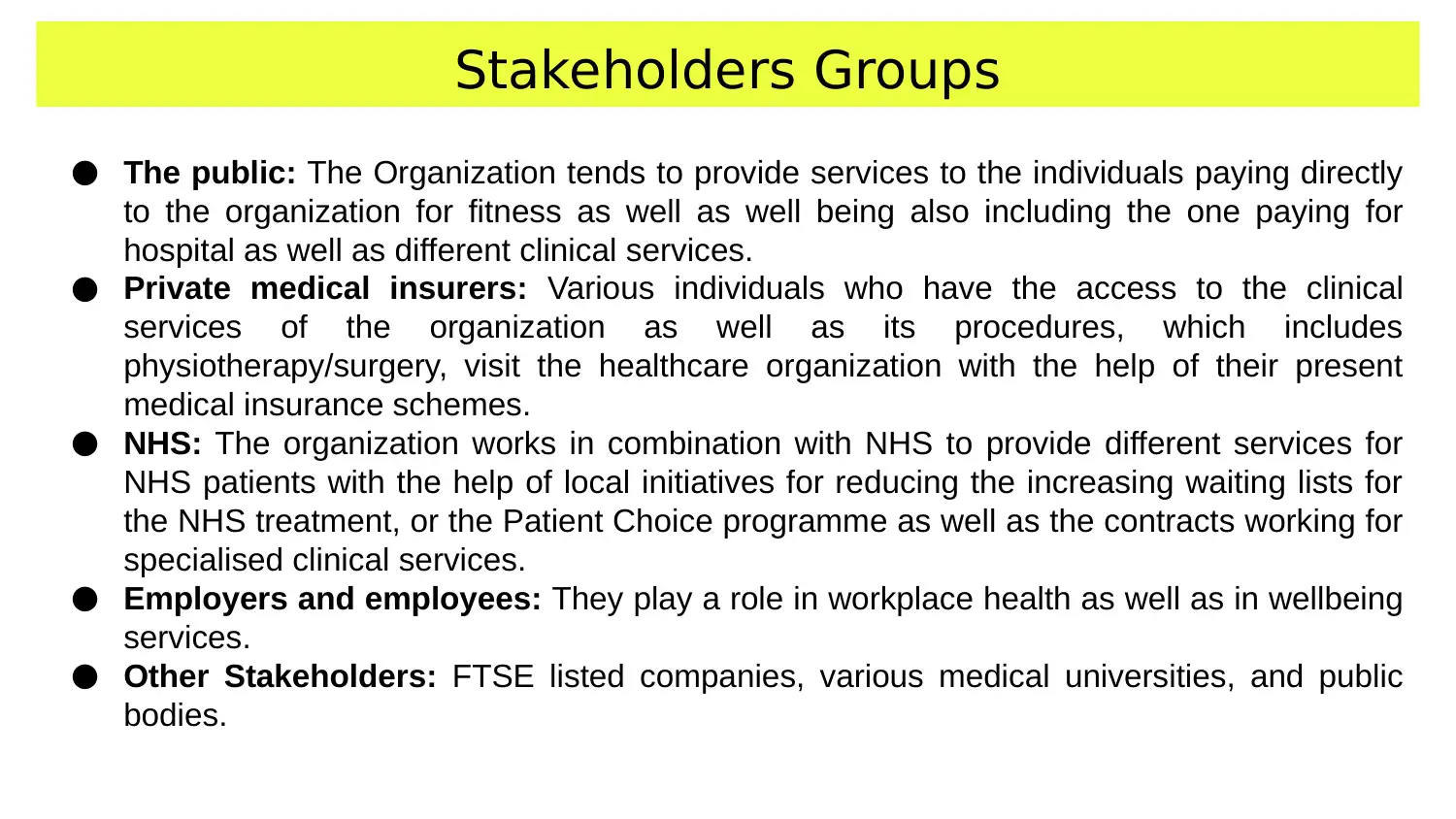
Stakeholders Groups
● The public: The Organization tends to provide services to the individuals paying directly
to the organization for fitness as well as well being also including the one paying for
hospital as well as different clinical services.
● Private medical insurers: Various individuals who have the access to the clinical
services of the organization as well as its procedures, which includes
physiotherapy/surgery, visit the healthcare organization with the help of their present
medical insurance schemes.
● NHS: The organization works in combination with NHS to provide different services for
NHS patients with the help of local initiatives for reducing the increasing waiting lists for
the NHS treatment, or the Patient Choice programme as well as the contracts working for
specialised clinical services.
● Employers and employees: They play a role in workplace health as well as in wellbeing
services.
● Other Stakeholders: FTSE listed companies, various medical universities, and public
bodies.
● The public: The Organization tends to provide services to the individuals paying directly
to the organization for fitness as well as well being also including the one paying for
hospital as well as different clinical services.
● Private medical insurers: Various individuals who have the access to the clinical
services of the organization as well as its procedures, which includes
physiotherapy/surgery, visit the healthcare organization with the help of their present
medical insurance schemes.
● NHS: The organization works in combination with NHS to provide different services for
NHS patients with the help of local initiatives for reducing the increasing waiting lists for
the NHS treatment, or the Patient Choice programme as well as the contracts working for
specialised clinical services.
● Employers and employees: They play a role in workplace health as well as in wellbeing
services.
● Other Stakeholders: FTSE listed companies, various medical universities, and public
bodies.
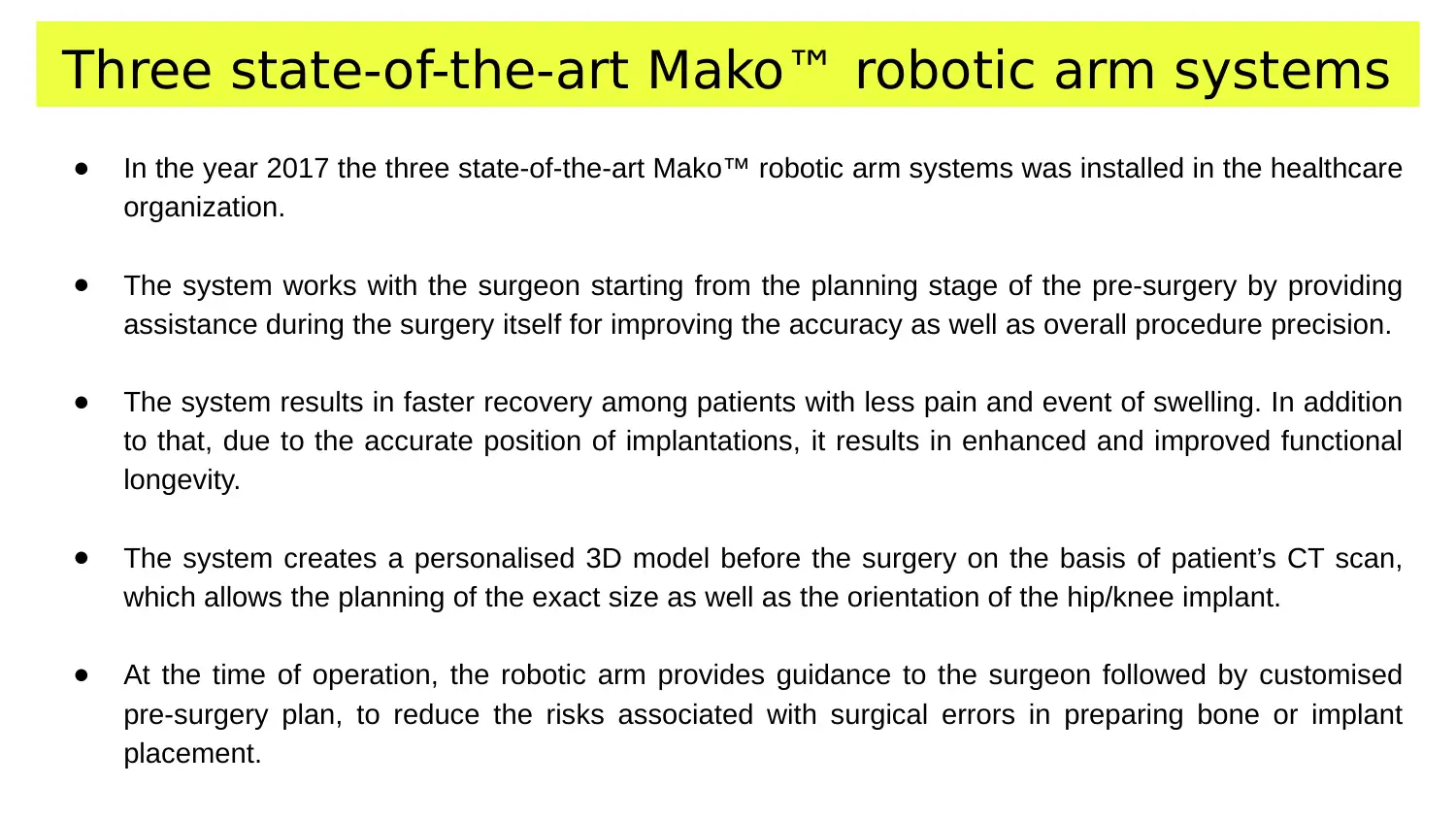
Three state-of-the-art Mako™ robotic arm systems
● In the year 2017 the three state-of-the-art Mako™ robotic arm systems was installed in the healthcare
organization.
● The system works with the surgeon starting from the planning stage of the pre-surgery by providing
assistance during the surgery itself for improving the accuracy as well as overall procedure precision.
● The system results in faster recovery among patients with less pain and event of swelling. In addition
to that, due to the accurate position of implantations, it results in enhanced and improved functional
longevity.
● The system creates a personalised 3D model before the surgery on the basis of patient’s CT scan,
which allows the planning of the exact size as well as the orientation of the hip/knee implant.
● At the time of operation, the robotic arm provides guidance to the surgeon followed by customised
pre-surgery plan, to reduce the risks associated with surgical errors in preparing bone or implant
placement.
● In the year 2017 the three state-of-the-art Mako™ robotic arm systems was installed in the healthcare
organization.
● The system works with the surgeon starting from the planning stage of the pre-surgery by providing
assistance during the surgery itself for improving the accuracy as well as overall procedure precision.
● The system results in faster recovery among patients with less pain and event of swelling. In addition
to that, due to the accurate position of implantations, it results in enhanced and improved functional
longevity.
● The system creates a personalised 3D model before the surgery on the basis of patient’s CT scan,
which allows the planning of the exact size as well as the orientation of the hip/knee implant.
● At the time of operation, the robotic arm provides guidance to the surgeon followed by customised
pre-surgery plan, to reduce the risks associated with surgical errors in preparing bone or implant
placement.
⊘ This is a preview!⊘
Do you want full access?
Subscribe today to unlock all pages.

Trusted by 1+ million students worldwide
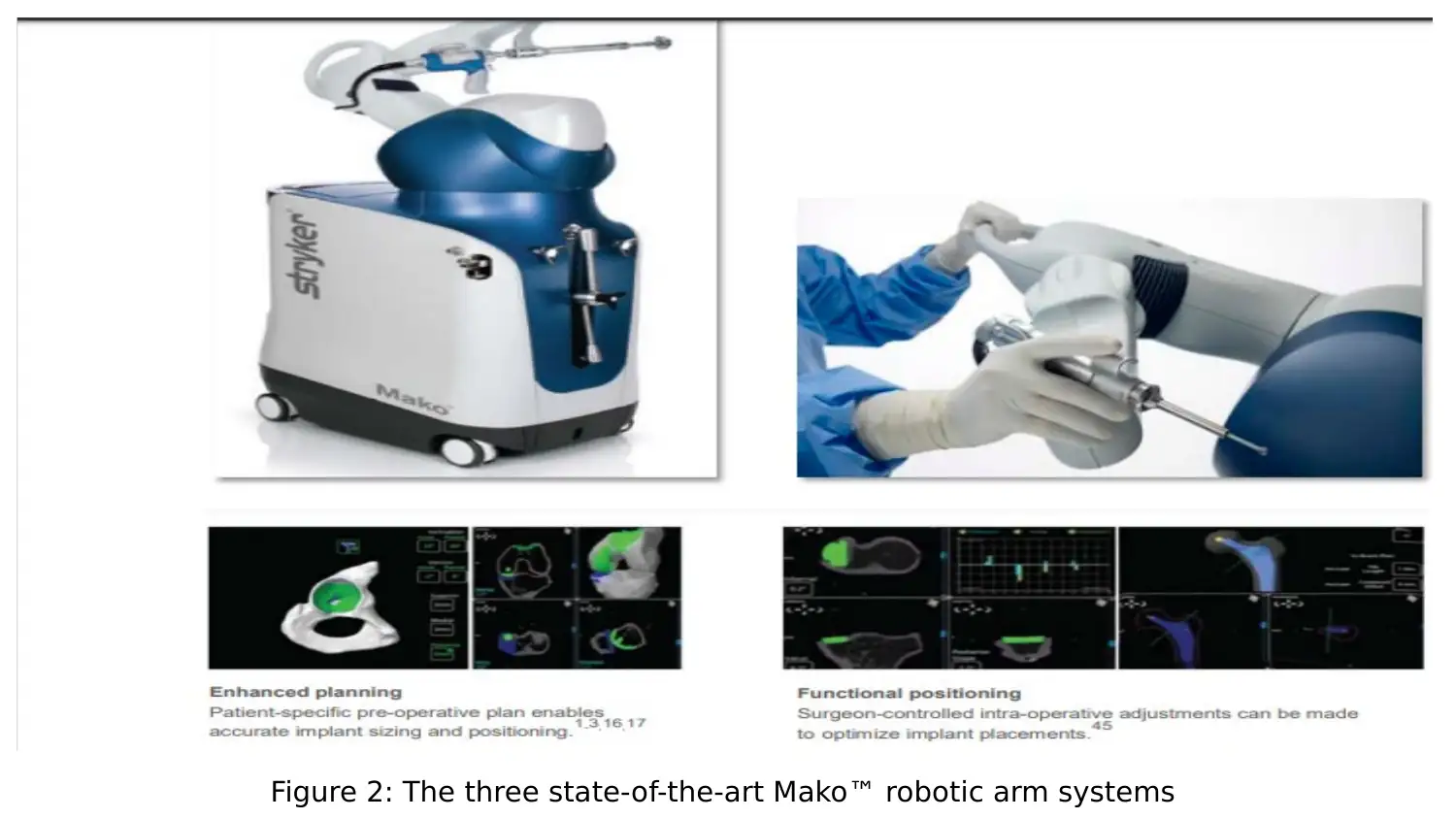
Figure 2: The three state-of-the-art Mako™ robotic arm systems
Paraphrase This Document
Need a fresh take? Get an instant paraphrase of this document with our AI Paraphraser
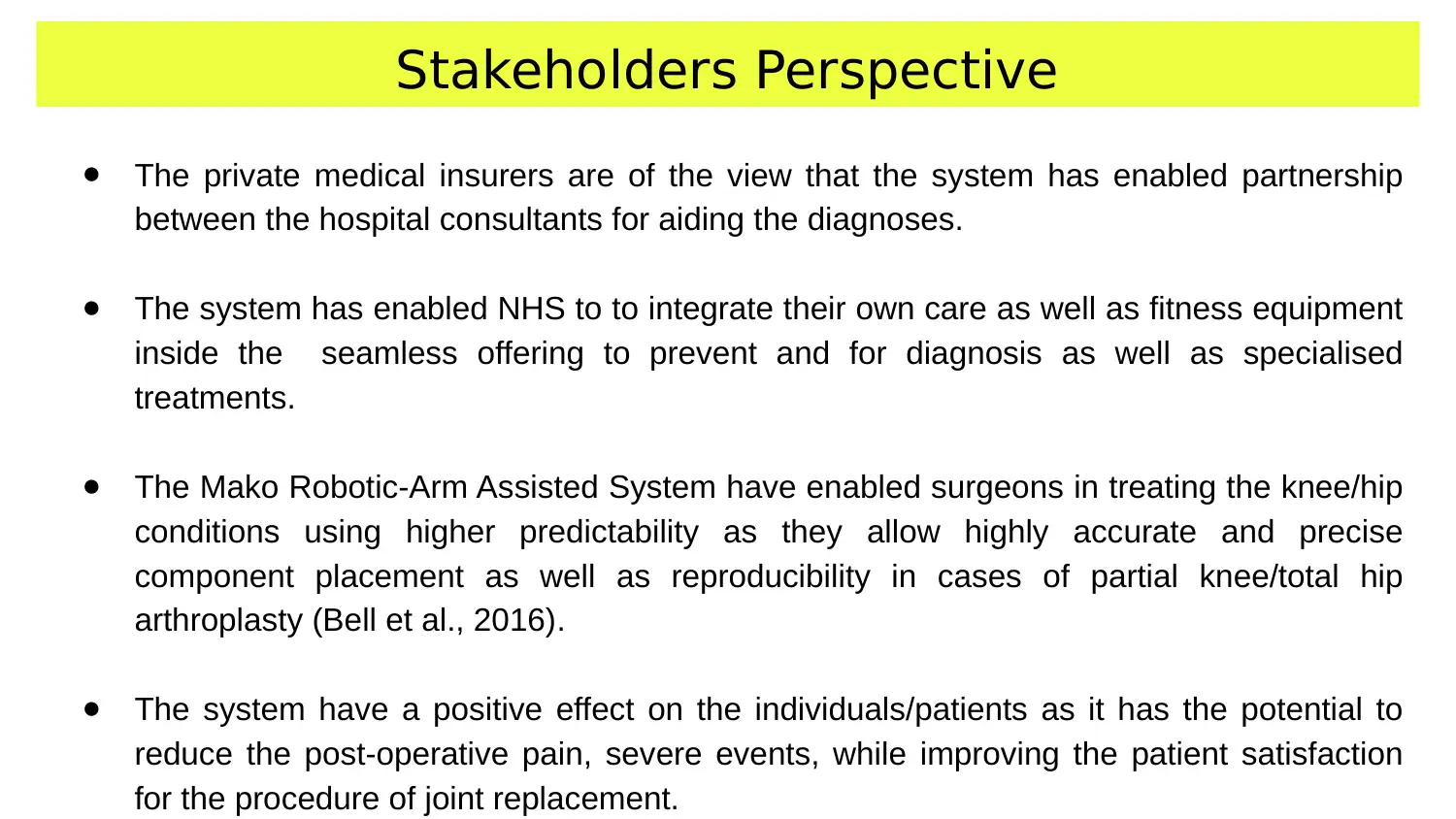
Stakeholders Perspective
● The private medical insurers are of the view that the system has enabled partnership
between the hospital consultants for aiding the diagnoses.
● The system has enabled NHS to to integrate their own care as well as fitness equipment
inside the seamless offering to prevent and for diagnosis as well as specialised
treatments.
● The Mako Robotic-Arm Assisted System have enabled surgeons in treating the knee/hip
conditions using higher predictability as they allow highly accurate and precise
component placement as well as reproducibility in cases of partial knee/total hip
arthroplasty (Bell et al., 2016).
● The system have a positive effect on the individuals/patients as it has the potential to
reduce the post-operative pain, severe events, while improving the patient satisfaction
for the procedure of joint replacement.
● The private medical insurers are of the view that the system has enabled partnership
between the hospital consultants for aiding the diagnoses.
● The system has enabled NHS to to integrate their own care as well as fitness equipment
inside the seamless offering to prevent and for diagnosis as well as specialised
treatments.
● The Mako Robotic-Arm Assisted System have enabled surgeons in treating the knee/hip
conditions using higher predictability as they allow highly accurate and precise
component placement as well as reproducibility in cases of partial knee/total hip
arthroplasty (Bell et al., 2016).
● The system have a positive effect on the individuals/patients as it has the potential to
reduce the post-operative pain, severe events, while improving the patient satisfaction
for the procedure of joint replacement.
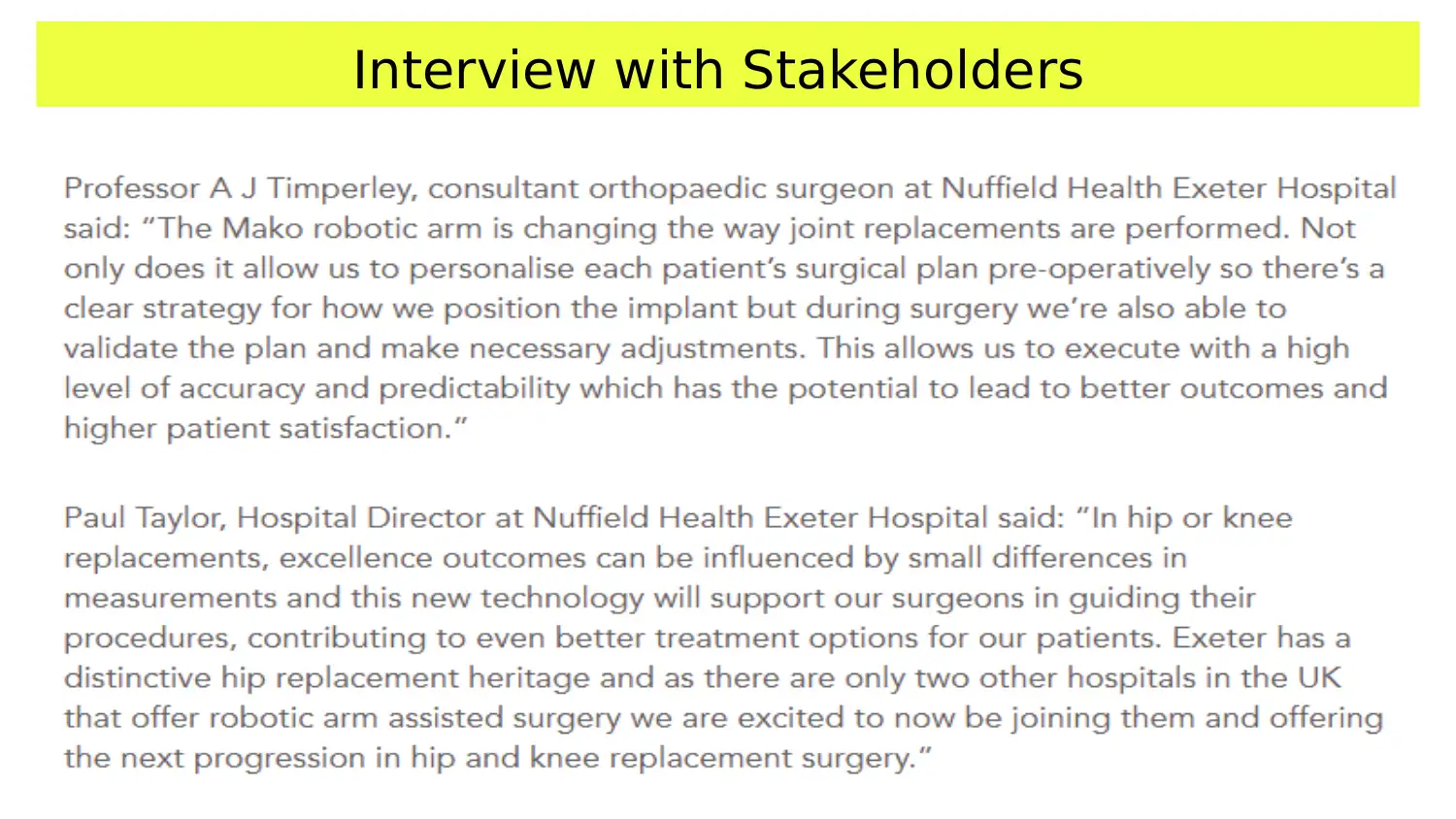
Interview with Stakeholders
⊘ This is a preview!⊘
Do you want full access?
Subscribe today to unlock all pages.

Trusted by 1+ million students worldwide
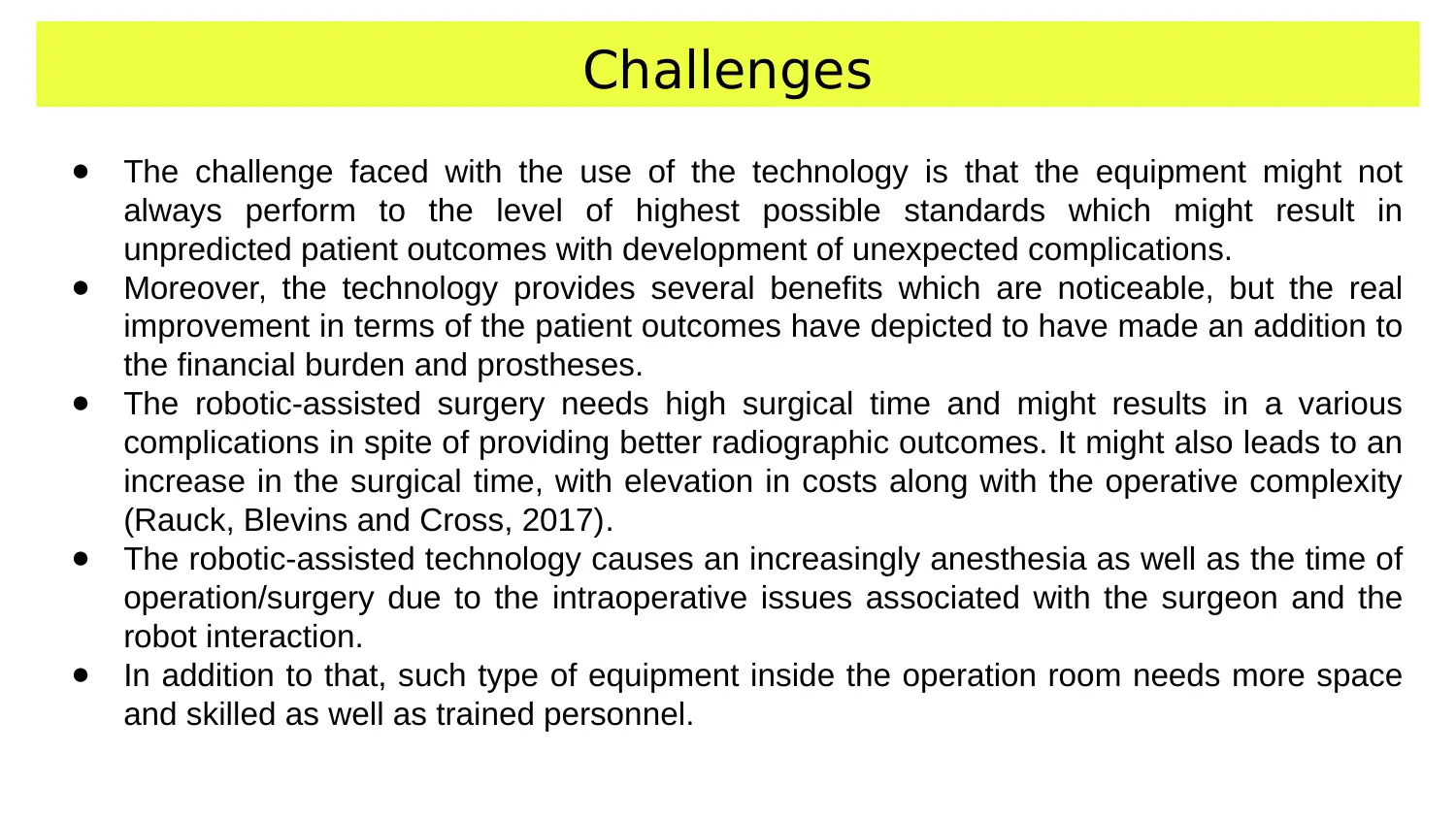
Challenges
● The challenge faced with the use of the technology is that the equipment might not
always perform to the level of highest possible standards which might result in
unpredicted patient outcomes with development of unexpected complications.
● Moreover, the technology provides several benefits which are noticeable, but the real
improvement in terms of the patient outcomes have depicted to have made an addition to
the financial burden and prostheses.
● The robotic-assisted surgery needs high surgical time and might results in a various
complications in spite of providing better radiographic outcomes. It might also leads to an
increase in the surgical time, with elevation in costs along with the operative complexity
(Rauck, Blevins and Cross, 2017).
● The robotic-assisted technology causes an increasingly anesthesia as well as the time of
operation/surgery due to the intraoperative issues associated with the surgeon and the
robot interaction.
● In addition to that, such type of equipment inside the operation room needs more space
and skilled as well as trained personnel.
● The challenge faced with the use of the technology is that the equipment might not
always perform to the level of highest possible standards which might result in
unpredicted patient outcomes with development of unexpected complications.
● Moreover, the technology provides several benefits which are noticeable, but the real
improvement in terms of the patient outcomes have depicted to have made an addition to
the financial burden and prostheses.
● The robotic-assisted surgery needs high surgical time and might results in a various
complications in spite of providing better radiographic outcomes. It might also leads to an
increase in the surgical time, with elevation in costs along with the operative complexity
(Rauck, Blevins and Cross, 2017).
● The robotic-assisted technology causes an increasingly anesthesia as well as the time of
operation/surgery due to the intraoperative issues associated with the surgeon and the
robot interaction.
● In addition to that, such type of equipment inside the operation room needs more space
and skilled as well as trained personnel.
Paraphrase This Document
Need a fresh take? Get an instant paraphrase of this document with our AI Paraphraser
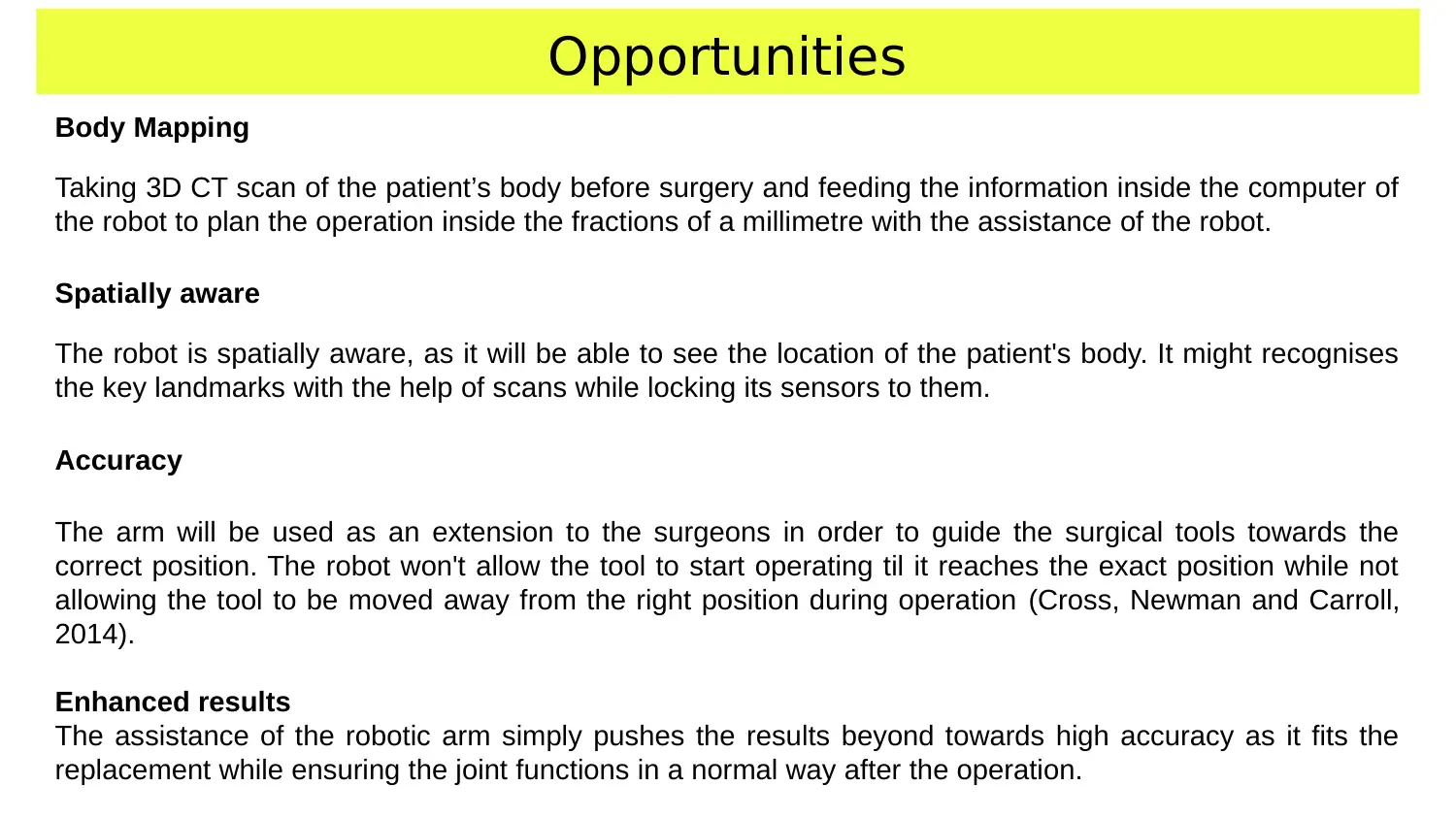
Body Mapping
Taking 3D CT scan of the patient’s body before surgery and feeding the information inside the computer of
the robot to plan the operation inside the fractions of a millimetre with the assistance of the robot.
Spatially aware
The robot is spatially aware, as it will be able to see the location of the patient's body. It might recognises
the key landmarks with the help of scans while locking its sensors to them.
Accuracy
The arm will be used as an extension to the surgeons in order to guide the surgical tools towards the
correct position. The robot won't allow the tool to start operating til it reaches the exact position while not
allowing the tool to be moved away from the right position during operation (Cross, Newman and Carroll,
2014).
Enhanced results
The assistance of the robotic arm simply pushes the results beyond towards high accuracy as it fits the
replacement while ensuring the joint functions in a normal way after the operation.
Opportunities
Taking 3D CT scan of the patient’s body before surgery and feeding the information inside the computer of
the robot to plan the operation inside the fractions of a millimetre with the assistance of the robot.
Spatially aware
The robot is spatially aware, as it will be able to see the location of the patient's body. It might recognises
the key landmarks with the help of scans while locking its sensors to them.
Accuracy
The arm will be used as an extension to the surgeons in order to guide the surgical tools towards the
correct position. The robot won't allow the tool to start operating til it reaches the exact position while not
allowing the tool to be moved away from the right position during operation (Cross, Newman and Carroll,
2014).
Enhanced results
The assistance of the robotic arm simply pushes the results beyond towards high accuracy as it fits the
replacement while ensuring the joint functions in a normal way after the operation.
Opportunities
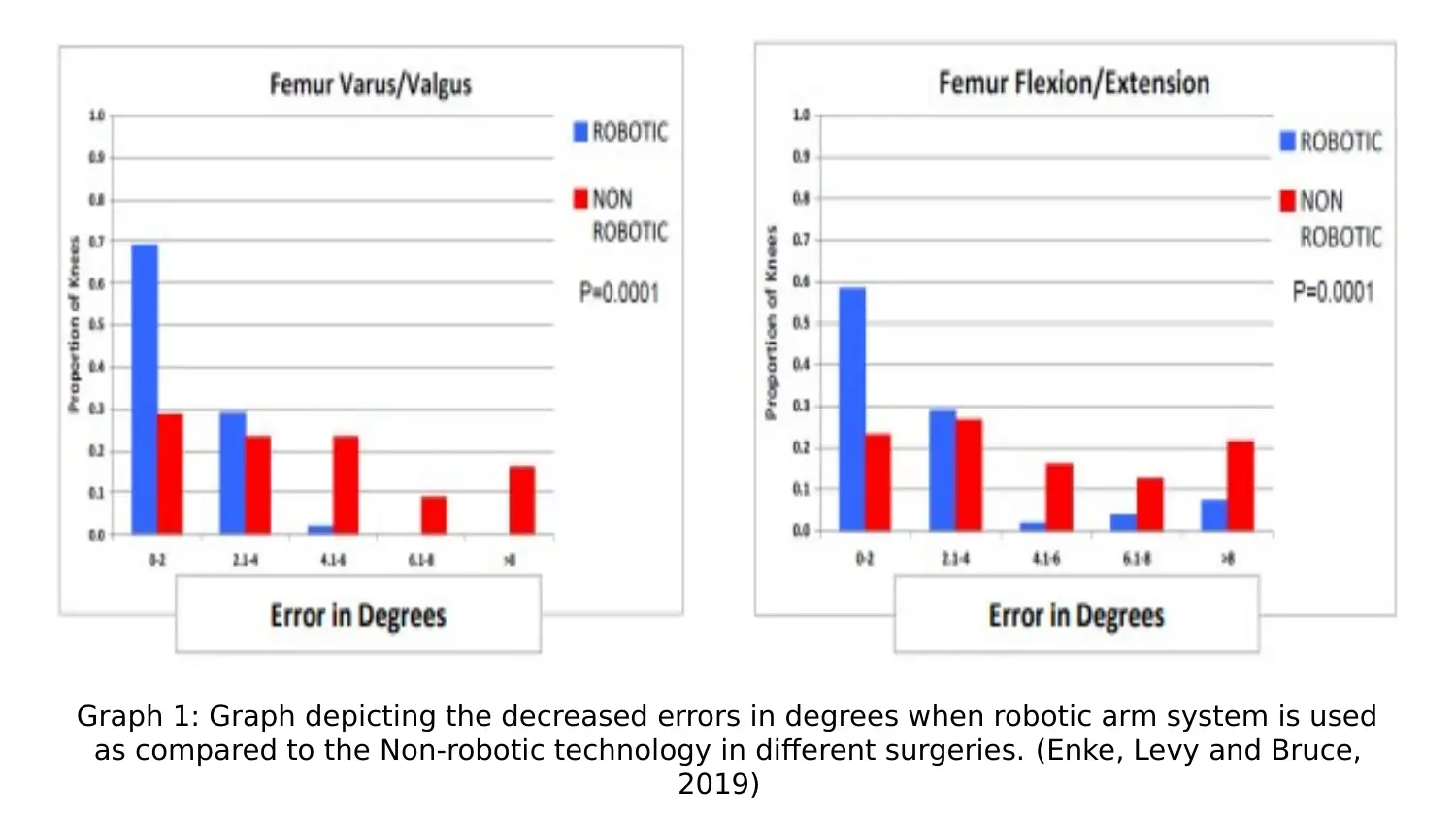
Graph 1: Graph depicting the decreased errors in degrees when robotic arm system is used
as compared to the Non-robotic technology in different surgeries. (Enke, Levy and Bruce,
2019)
as compared to the Non-robotic technology in different surgeries. (Enke, Levy and Bruce,
2019)
⊘ This is a preview!⊘
Do you want full access?
Subscribe today to unlock all pages.

Trusted by 1+ million students worldwide
1 out of 18
Related Documents
Your All-in-One AI-Powered Toolkit for Academic Success.
+13062052269
info@desklib.com
Available 24*7 on WhatsApp / Email
![[object Object]](/_next/static/media/star-bottom.7253800d.svg)
Unlock your academic potential
Copyright © 2020–2025 A2Z Services. All Rights Reserved. Developed and managed by ZUCOL.





